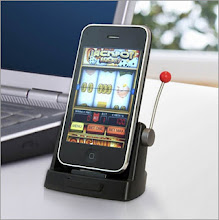Siri, the speech-recognition "personal assistant" that's built into all Apple iPhone 4S smartphones, takes a little getting used to. I tested it this weekend and learned a few handy tricks for getting the most out of the software.
Siri isn't an "app" in the iPhone sense, meaning it's not something you can download from the App Store, and it doesn't have an icon that you can press from the phone's screen to launch it. Right now, it's only available on the iPhone 4S. If you heard that it's possible to port Siri to the an older phone, bear in mind that Siri doesn't actually work on iPhone 4—you need the iPhone 4S.
How to Set Up Siri
While Siri comes fully pre-loaded on the phone, you still do need to set it up properly to get the most out of it. Siri needs to know your name and what language you speak.
Go to Settings > General > Siri
Go to "My Info" first to select your name from your Contacts list. Doing so puts you and Siri on a first-name basis. Select your preferred language from U.S. English, U.K. English Australian English, French (France), and German. While you're here, customize the other options from this screen, too, which are self-explanatory.
How to Access Siri
There are two ways to use Siri.
From afar. If you want to use Siri while the phone is a comfortable distance from you, like on a tabletop or Velcro-ed to your car's dashboard, press and hold the home button. Two quick tones and a picture of a microphone on screen, mean that Siri is listening for you to speak. You don't need to hold the phone near your face for Siri to hear you.
Up close. Alternatively, you can pick up the phone and hold it to you ear, as if you were making a call, and you'll hear the two short tones again, indicating that Siri is waiting for you to speak.
Tips for Using Siri
In theory, you should be able to speak to Siri in a normal voice at a normal pace, and it will understand you. But that's not quite the case. It helps to enunciate proper names clearly, for starters. Also, phrasing commands in certain ways delivers better results than others.
In theory, you should be able to speak to Siri in a normal voice at a normal pace, and it will understand you. But that's not quite the case. It helps to enunciate proper names clearly, for starters. Also, phrasing commands in certain ways delivers better results than others.
Here are some tips:
Make sure you have a strong connection. Siri does not process your speech input locally on your phone. The software sends commands through a remote server, so you have to be connected to Wi-Fi or a 3G signal.
Be specific. If you tell Siri to do something general, like "Launch iTunes," it can get confused easily. But it understands more specific commands, like "Play my playlist: Running songs," better.
Give the full command in one shot. When you give Siri a command, such as changing an appointment to your calendar, try to give the complete instructions in one shot. "Change the appointment for Tuesday to 3 p.m.," worked better for me than, "I want to change an appointment." Siri can handle run-on sentences just fine, so try to give the complete details of a command all at once.
Speak full names clearly. If Siri doesn't understand a proper name the first time you say it, the program will usually list some options from your Contacts. Choose the right person, as Siri is supposed to learn from the input you give it. After you say the same name several times and always pick the same corresponding option, Siri will better understand how you personally pronounce each name.
Add relationships. To add relationships words, like "wife," "dad," and "daughter," give Siri a command once with the term, such as, "Call my dad." Siri should then ask you who is your dad, and you'll be able to save that information in your Contacts. From then on, Siri should know the relationships and be able to text or call these people.
Alternatives to Siri
The only way to get Siri right now is to buy an iPhone 4S, but if a new phone isn't on your shopping list, you can get a taste of Siri's functionality from two similar iPhone apps, Dragon Go! for iPhone (free; shown below) and Vlingo (free). Both are downloadable from the App Store. Both Dragon (my preferred app) and Vlingo can offer you a taste of what Siri does if you have an older iPhone, such as iPhone 4 or iPhone 3GS, but they are missing a few signature feature that Siri has (see "Apple's Siri Versus Dragon Go! Versus Vlingo for details). Finally, Android users can try Speaktoit, another alternative to Siri.
The only way to get Siri right now is to buy an iPhone 4S, but if a new phone isn't on your shopping list, you can get a taste of Siri's functionality from two similar iPhone apps, Dragon Go! for iPhone (free; shown below) and Vlingo (free). Both are downloadable from the App Store. Both Dragon (my preferred app) and Vlingo can offer you a taste of what Siri does if you have an older iPhone, such as iPhone 4 or iPhone 3GS, but they are missing a few signature feature that Siri has (see "Apple's Siri Versus Dragon Go! Versus Vlingo for details). Finally, Android users can try Speaktoit, another alternative to Siri.
















0 comments:
Post a Comment